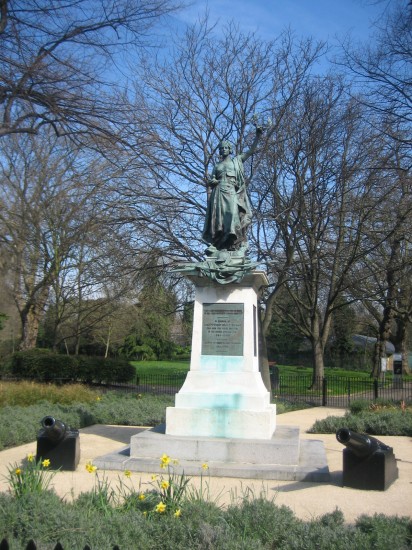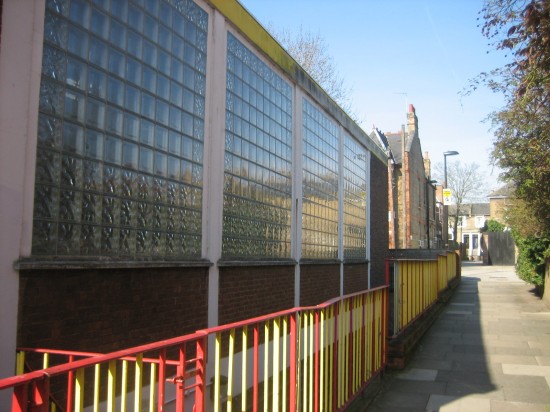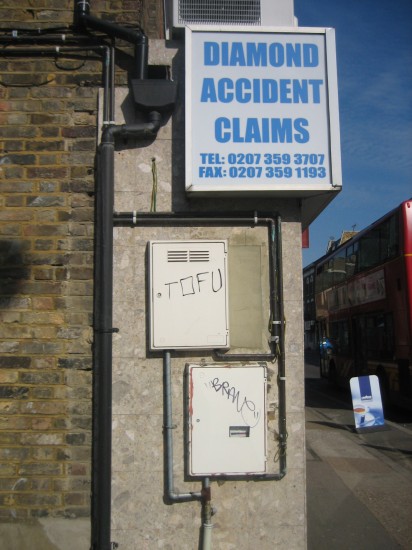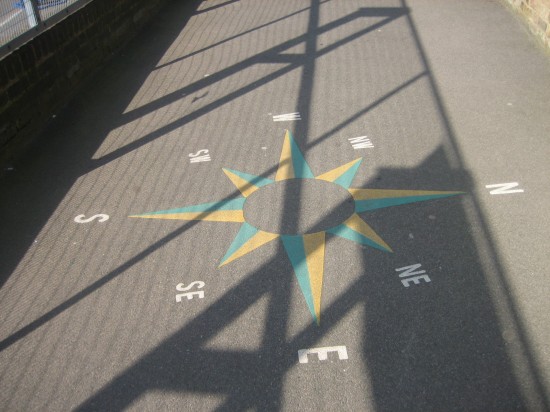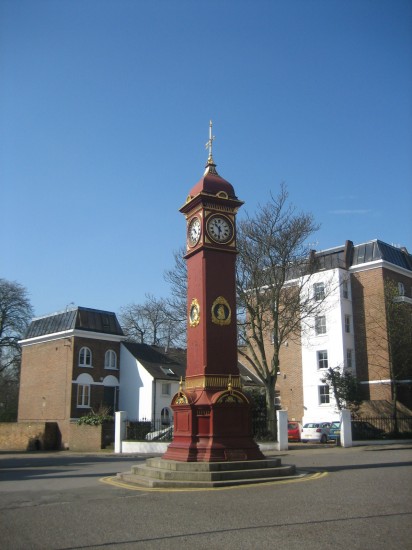by Jude Rogers.
4. Tube Lines
Back home to London briefly mid-week, before leaving for my other home – my old home, Home with a capital aitch. I am craving the air outside and the sun, and spring starts to explode as I do so. I long for quiet reminders of my past under a happy blue sky.
The train from London Paddington to Swansea leaves at 11.43. Now it is ten on Friday morning, not enough time for a long walk, but just enough for a balmy meander through the mile and a bit to the nearest tube station. I grab my neon-pink cheap holiday suitcase by its tall plastic handle, manoeuvre my bag clumsily on my back, lock the doors, juggle my camera on my wrist, venture out.
a. One of life’s simplest pleasures, for me, is to vary my routes to familiar places – to look at the A to Z and find streets close to home that are untrodden somehow. Even walking from our flat to Albion Road, there are different options, different visions that bring out the child in me – nosy and curious, looking for shock of the new. Today I peer properly at the odd house on Milton Grove with the curved upstairs window, opposite the orange bricked buildings, streaked with white and wet moss, where a teenage gang are currently waging war. I pass my local shop, where a fortnight ago a 15-year-old boy was shot in the leg, and count the strange square glass windows at Town Hall Approach where the others were said to run away. The sky pours its blue up ahead, beaming regardless.
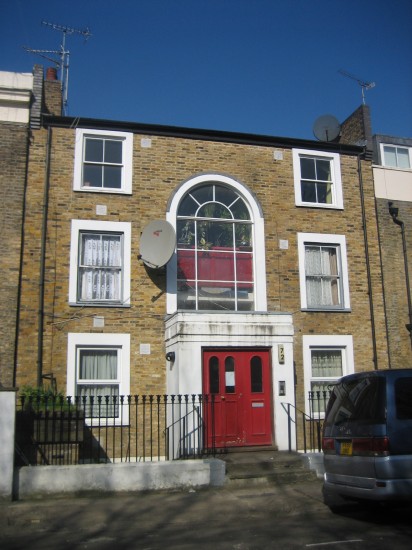
b. Lavell Street, the little cut-through to Green Lanes, is one I only found recently, a road that I had walked past almost every day. We all have these roads, little openings to other worlds, lurking forgotten in the corners of our minds. When I venture down them, the world shifts on its axis a little.

I look closer again as I walk down it today. A pale metal sign on the wall to the right looks like a sign from the gas board, but I take a moment to read it, and it tells a very different story. It tells me about the local Air Training Corps, and the thirteen members from it that died during the Second World War. Thirteen trees were planted on this road to commemorate them, and I look at them now ¬¬– Ronald George Burton, Cyril Albert Payne, Gilbert Leonard Marks and their friends – stretching out their arms, protecting London from the glare.
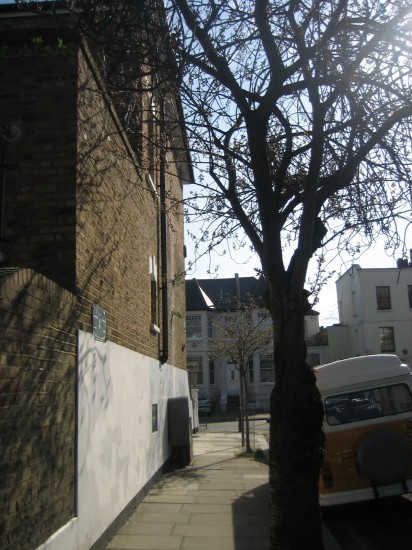
c. I drag my bags past The Atlas, a grand, gorgeous pub now turned into flats, with a loft – the first of many in this still-rising part of town – sitting squat on its top. On Green Lanes, its hotch-potch of lovely contradictions shimmers in the light. A shiny Tesco Express next to the rusty oval sign of the Crown Wrought Iron Specialists; a Turkish DIY shop called S&M opposite a lesbian pub with black walls and dark windows. At the side of Diamond Accident Claims, someone has written TOFU on a fuse box for no reason whatsoever. Somehow it fits, and I laugh, turn the corner.
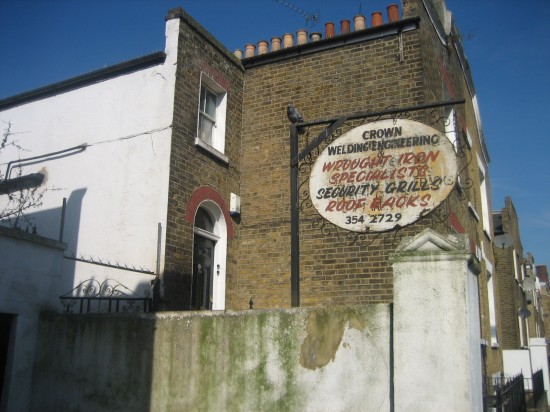
d. On Petherton Road, tall trees sit in cages, their trunks strengthened strangely with wooden casings. I used to live at the top of this long street, in a shared house overlooking the 141 to Moorgate to the south and Palmers Green to the north, the 341 to Waterloo or Northumberland Park, and the many languorous Man Fridays that fell from the Robinson Crusoe.
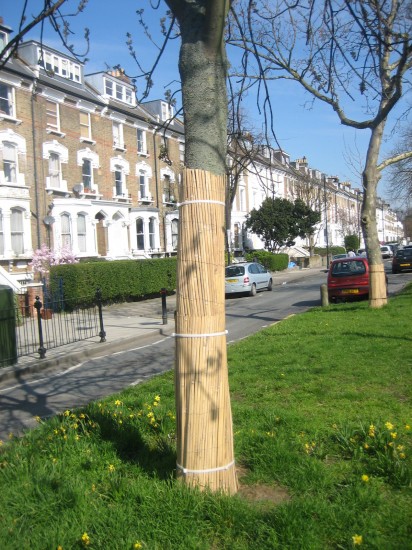
Back then, I would walk to Highbury almost every day, but I never knew about this path on this road’s western flank. In the real world, St Augustine’s Path is heralded with two belisha beacons, painted onto the pavement, streaming with sun beams. The path stretches from it, dazzled with pictures and primary colours.
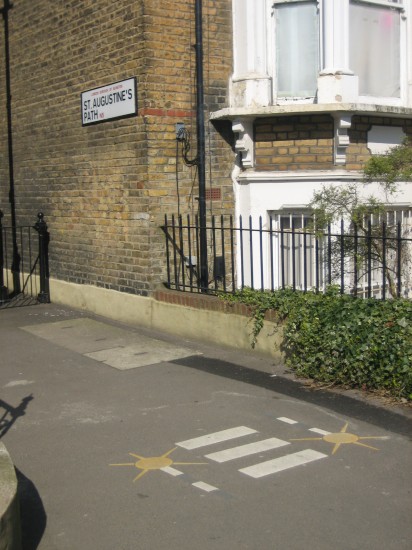
It is Easter now, and the path is quiet, only brushed by grown-up feet. It sits between a school and a playground, and some enterprising souls have turned it into an extension of both. Yellow paws lead us up to an alphabet snake, a compass shaped like a star, the solar system in order, a space rocket turned into a hopscotch, all criss-crossed with shadows. Another beacon marks the end of it, the return to the light.
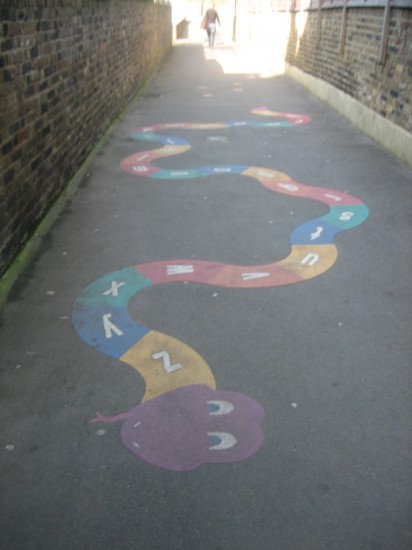
e. On Balfour Road, all is serene, warm and still. Walls whiten in the sun, trees green under the blue. Posters for a missing cat, Ruby, last seen at 6.30pm on November 21, look strangely hopeful. Four months after she has gone, the seasons have shifted, and her black fur gleams brightly under the laminate.
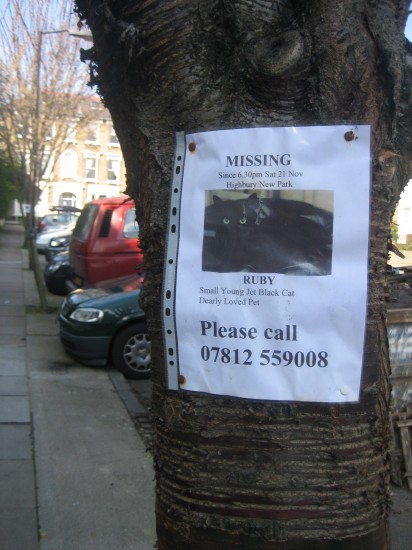
I emerge onto the main drag at Highbury Barn, my case heavy, my brow sweaty. The line of tall houses opposite, that couch Nigel Slater, look elegant, handsome; sitting just down the way from shrines to duck rillettes, leafy beetroots and ripe Stiltons. I pass them and turning off to the right, where Queen Victoria glowers from a Victorian clock tower. As she gives a growl of the old near the wealth of the new, the cheap wheels of my case whirl their plastic on the shiny pavement. Then they turn to Highbury Fields, the deep green, the last leg.
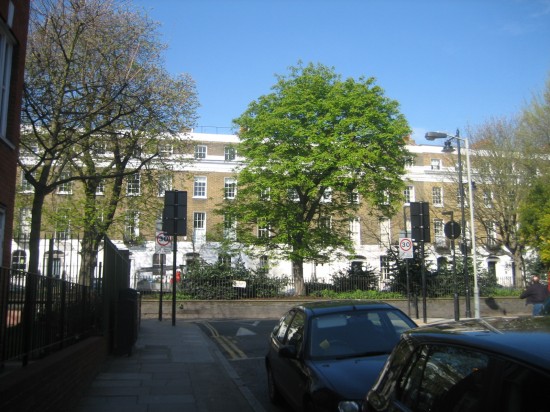
f. Daffodils sit in their dozens, opening their mouths to the day. Their deep yellow is a reminder of Wales, a lovely marker for home. Toddlers waddle from their parents’ high hands, dogs dash, people canter. The line of lovely houses to the left of the street don’t impose, only welcome.
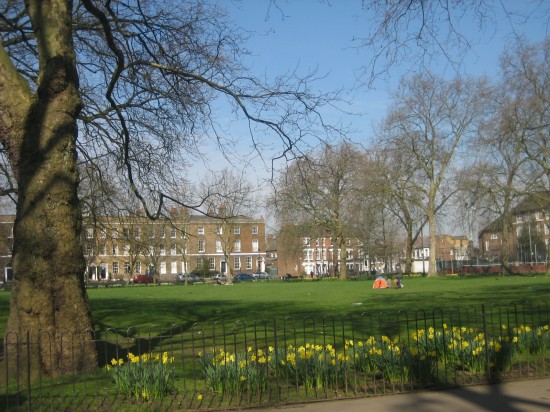
The smell of fresh grass fills my nose as the station quickly looms – ugly, boxy, perfunctory, puncturing my dreaminess. I heave my luggage to the traffic lights, and notice the statue of a woman standing at the edge of the fields. Her right arm is raised high to the heavens, cannons lifting below her, marking the dead. I look up at the blue sky, and think what a day it is to be alive.
